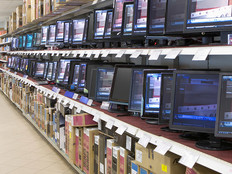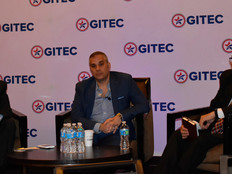Federal Procurement Modernization Requires a Cultural Change
The dedicated federal procurement workforce is trapped in a culture that, for years, has made requirements around cost and acquisition schedules the primary considerations for evaluating contract awards.
Such a process fails to include an examination of innovative and best-value approaches to meet mission requirements for departments and agencies.
Additionally, the ongoing failure by contracting officers, project managers and acquisition officials to implement full and open competition in federal procurement — as required by law, regulation and policy — harms agencies’ ability to leverage market-driven innovations and cut costs.
A New Approach to Federal IT Acquisition
Advances in IT and telecommunications demand a fresh paradigm in the acquisition process that includes consideration of new innovations and total lifecycle costs as important evaluation elements.
Accordingly, the way federal acquisition professionals are trained and employee performance goals and objectives are established needs to be revised and updated to include more than just meeting budget and schedule provisions. We need leadership to drive this new paradigm and cultural change.
There may have been a time when a singular reliance on meeting cost and schedule requirements was justified, such that job performance, salary increases and promotions were based almost exclusively on the ability to meet budgets and deadlines.
However, the explosion of innovation in technical, functional and performance capabilities to meet mission requirements — along with a constrained budget environment and growth in reported cyber intrusions — demands an approach that includes a wider range of evaluative criteria.
Adopting a more open and transparent process that does not rely so heavily on lowest price technically acceptable (LPTA) provisions will deliver improved outcomes for the end user as well as the American taxpayer. This will require focused leadership across the executive branch and at the senior leadership level at all departments, as well as agencies coming together to first acknowledge, and then address, this important issue.
Creating a More Dynamic Relationship with Industry
Federal procurement officials also need to create a more interactive engagement model with the tech industry. Industry days and other transparent outreach will help ensure that acquisition officials, contracting officers and agency leadership have timely access to information about new and innovative approaches to IT challenges. These include networking, computing and storage solutions that leverage cloud and virtualization solutions in a productive and efficient manner, and that also increase the security and privacy of data.
The number of cybersecurity incidents where perpetrators attempt to steal, manipulate or corrupt data is a growing threat to the confidentiality, integrity and availability of the data.
IT and communications sector vendors continue to invest in research and development to deliver new and innovative solutions to the market that address IT and communications requirements for the public and commercial sectors. The proliferation of connected devices and the Internet of Things illustrates the need for an approach to federal procurement that includes much more than just cost and schedule.
As one of the largest acquirers of IT and telecommunications products and services, the government should demonstrate leadership with a procurement process that leverages innovation and examines total cost of ownership, not just price, as an evaluative measure in awarding contracts.
Concurrently, there needs to be regular accountability and management oversight across agencies to ensure compliance with legislative, regulatory and policy requirements for full and open competition in federal procurement.
Increasing Competition for Federal IT Contracts
The government must also do what it can to address practices that limit competition. Even though there are longstanding provisions in law, federal acquisition regulations and Office of Management and Budget guidance that expressly limit acceptable justifications for sole source or limited source procurements, some contracting officers and procurement officials continue to pursue these practices.
Although many agencies employ a competition advocate, the repetitive nature of unsubstantiated justifications suggests that immediate and sustained attention from agency leadership is necessary.
While there may be some examples where only one technology or a single provider can meet a mission requirement, those instances are limited and require written justification and approval.
Solicitations for IT and telecommunications products and services should be issued based on the technical, functional and performance requirements established by the end user to meet mission objectives for new projects and technology refreshes.
This would allow the market to respond in an open and transparent manner and allow the contracting officer to evaluate submissions holistically, including an assessment of total cost of ownership. Such a process would yield improved results for the end user and reduce overall cost to the American taxpayer.
Examples of law, regulation and policy related to this matter include the following:
- The Competition in Contracting Act (41 USC section 3301)
- The Federal Acquisition Regulation (part 6)
- Office of Management and Budget memoranda to agencies (April 2011, January 2011, December 2007 and April 2005). There remain far too many examples where contracting officers attempt to put forth invalid reasons as presumed justification for limiting or avoiding competition. This is simply unacceptable and must change.
With a new administration and a renewed focus on technology modernization, an important element of that effort will include the federal procurement process. While this matter has been discussed and debated for years, now is the time for action, and the issues described here should be candidates for consideration.
The key ingredient is leadership. Recognition that a new paradigm in federal procurement is necessary is essential. We need a new approach and a culture that celebrates innovation and choice in the provisioning of IT and telecommunications products and services required to meet mission objectives (in addition to cost and schedule).
Modernization can be challenging and it is not just about the technology. It is also about people and process. A new paradigm for federal procurement with focused leadership at the executive level will produce favorable results for the end user and the American taxpayer. Let’s get to it!









